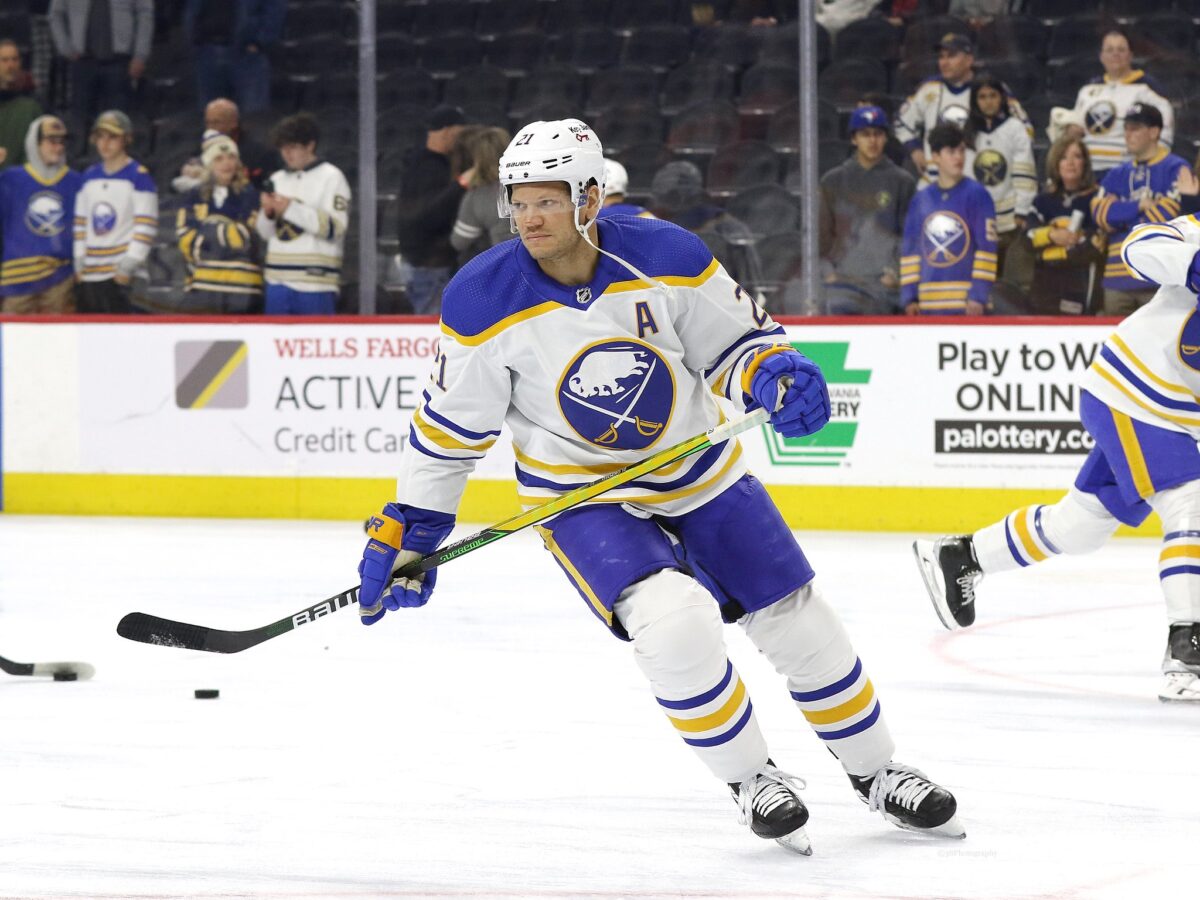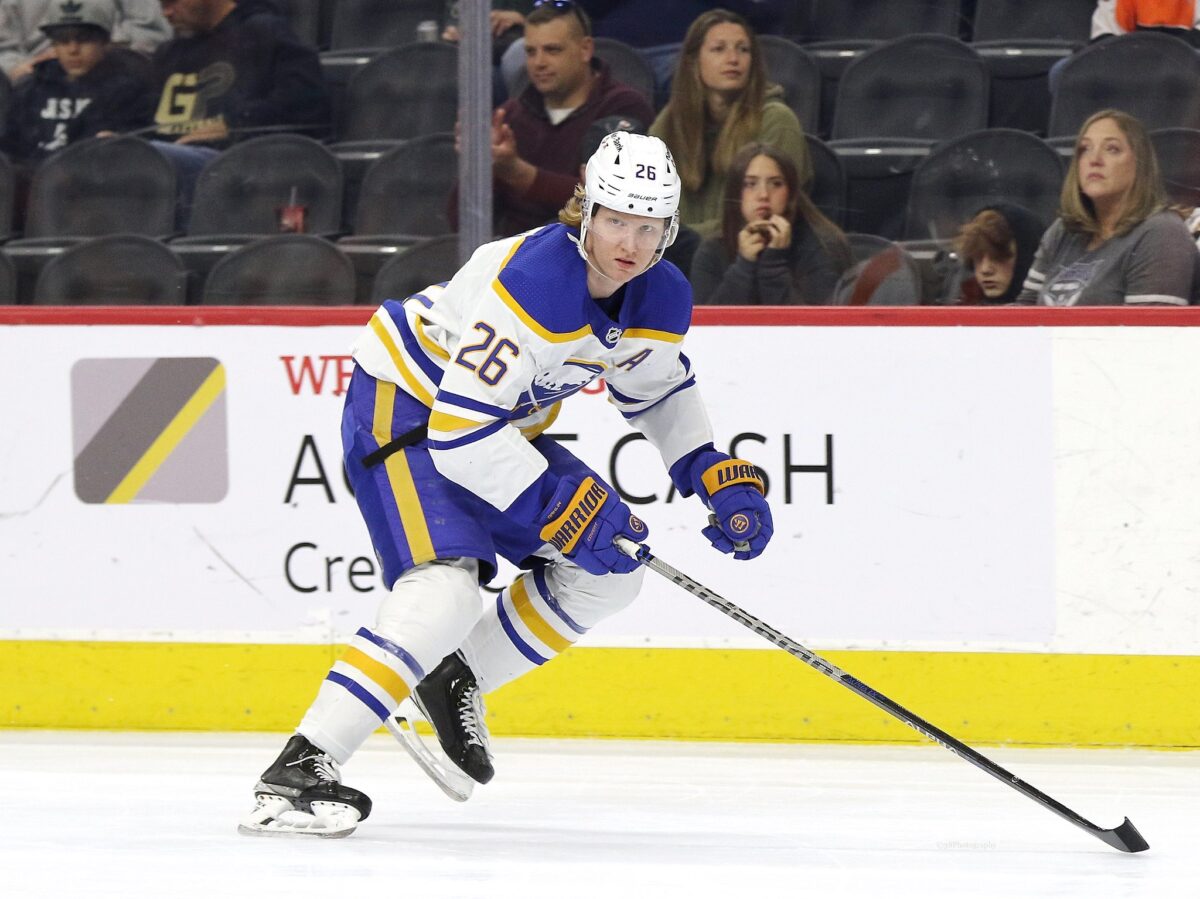The roster makeup of the Buffalo Sabres emphasizes the youth movement the organization has committed to in recent seasons. One area that has flown somewhat under the radar this offseason is the strength of the leadership group the team has. Kyle Okposo and Zemgus Girgensons, alternate captains from a year ago, are both returning this season and will look to pick up where they left off with the organizational culture overhaul. The group also boasts Alex Tuch, Rasmus Dahlin, Craig Anderson and Dylan Cozens, all of whom will have an active role in the success of the team this season, on and off the ice. This culmination of players is certainly the deepest the leadership core has been in recent seasons, and the work they started last season with the team’s turnaround in the latter half of the season will carry over into this season.
Leadership State in Seasons Prior Was a Mixed Bag
During their 11-year playoff drought, the lack of leadership throughout the lineup has been a consistent issue they struggled to fix. Brian Gionta and Jack Eichel are the team’s two most recent captains, and under their leadership the team failed to make the playoffs and barely scratched the competitive level needed to do so. Gionta was a solid choice as captain, and he did display some really good characteristics that are needed from the face of the team.

Eichel’s tenure was somewhat rocky, but there is no disputing his abilities on the ice. He was definitely a captain who led by example, but unfortunately it just did not work out the way the team would have hoped. He was stripped of the captaincy a year ago, and the team has yet to fill that vacancy.
Okposo, Anderson and Girgensons Stepped up Last Season
Without anyone wearing the “C” this season, Okposo and Girgensons filled the void and they did so quite nicely last season. While neither of them held the official captaincy title, Okposo seemed to really embrace what it means to be the leader of a hockey team, both on and off the ice. He and Girgensons are routinely some of the hardest working players on the team, and the lead-by-example style works because they set an example of what it means to play Sabres hockey nightly.
Okposo stands out specifically because of his ability to lead the team even when they are not on the ice. He is one of the first players at the podium to speak to the media after every single game, win or loss. He has embraced his role as a veteran and has become the leader of the locker room that has been missing for quite some time. The other players on the team show him the utmost respect and appreciation for him as well, and having a captain with such high regard goes a long way for the structure and success of the team. It seems almost inevitable that he will become the 28th captain in franchise history, and it is a role he has earned without a doubt.

One player who did not get enough credit for his impact on the Sabres last season was Craig Anderson. The Sabres brought in the 41-year-old goaltender last season not only to stabilize their goaltending position, but to be another veteran voice for the room and a calming presence in-game. Having leadership stemming from the crease is not a traditional structure for a team, but Anderson simply being a calm presence in the net and the experience he has gained in his long career adds another layer to what he provides for the club. Having him is like having another coach; he is someone the players can lean on in tough situations and he can provide guidance for them.
Tuch, Dahlin and Cozens Make up Young Leadership Core
After the Sabres dealt Eichel, Tuch came in and made an immediate impact not only with his playing abilities but also his appeal to the fans, and the pride he takes in wearing a Sabres sweater. He takes the wins and losses of this franchise very seriously, and it stems from his love of the team he’s had since he was a child. It is not hard to envision Tuch as the future captain of this team, and having him work alongside Girgensons, Anderson and Okposo is a tremendous addition to an improved leadership group.
Related: The Next Sabres Captain: The Top 5 Candidates
Dahlin wore an “A” for the Sabres on a few occasions last seasons, and his growth as a dependable star for the team is something that simply cannot be ignored. He not only has some of the best skills on the team, but he took some major steps in his development last season. He is not afraid to be physical, and he can compete with the best players in the league. He has really embraced his role as a top defender for the team and having him, along with Anderson, as the leader of the defense will help shape the defense core as a whole.

A player who has also been pegged as a potential future captain is Cozens. He has a gritty style about him, and he has shown a willingness to drop the gloves to defend a teammate on numerous occasions. The Sabres lack players with snarl and physicality up front, and Cozens fills that void quite nicely. He will be able to lead this team by example on the ice, and having the fighting ability gives him an important role in the leadership core for the team. He seems to have a knack for dragging his team into the fight when they are having an off night and he helps make the team more competitive because of it.
This combination of players provides something the team has lacked in recent years: balance. They have a steady mix of veterans and young players that all bring something different to the table. Dispersing captaincy duties to a larger group of players takes the pressure off, and helps remove the feeling like they need to do it all. It also will help with the natural course of injuries that take place throughout the year. If one of these players are out, there are many more to step up and lead the team through a particular game. It should all lead to one of the strongest locker rooms the Sabres have had in recent years, and these changes should bode well for the team’s success in 2022-23.